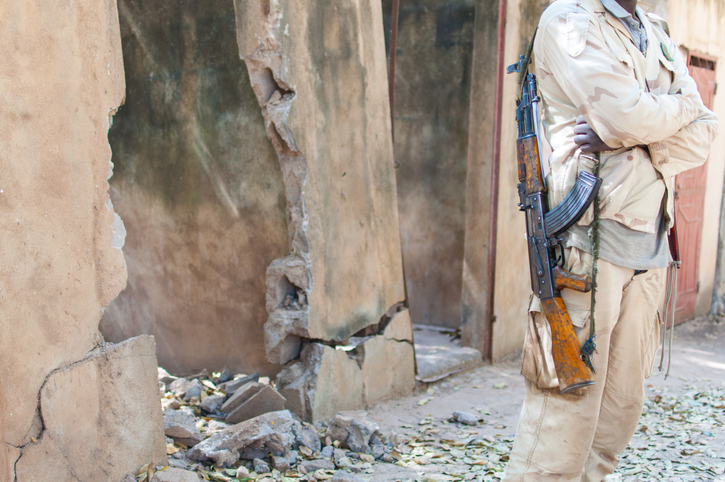The pandemic has brought renewed attention to the fact that domains often considered separate are deeply interconnected – public health, politics, the economy, the law, and of course, the environment. This column argues that the resilience of our societies depends on acknowledgement of multiple centres of decision-making. The authors provide evidence from a number of sectors about the fundamental importance of including civil society and local bodies in systemic governance.
Global interconnectedness and interdependence enable the effects of major shocks like Covid-19 to propagate across sectors, economies, and society as a whole. The pandemic turned global crisis is a reminder of how changes in the complex system of environmental, economic, and socio-political systems of which we are a part are non-linear, unpredictable, arise out of sudden transitions, and can lead to large systemic and social impacts.
The pandemic has revealed how a disease as a stressor originating from one sector (the health sector) can trigger vulnerabilities in other sectors, setting off cascading effects across sectors and levels. Notwithstanding the positive impact in sectors such as the environment, in general, these effects have mounted up to drastic human losses and caused enormous damage to the economy and society.
For example, the crisis has highlighted how the resilience of the health system has an impact on economic resilience – the ability of the economic system to withstand shocks without losing the capacity to allocate resources efficiently. Countries with low emergency response capacity and high trade exposure are at higher risk of economic crisis, while countries with lower reliance on exports and higher epidemic preparedness will be more economically resilient.
Similarly, with lockdowns, economies that rely on service industries, including tourism and hospitality, are more vulnerable. This economic vulnerability translates very easily into social vulnerability, with increasing risks of gender-based violence and issues with education and mental health.
Avoiding systemic collapse requires a holistic approach to the resilience of an interconnected system
In response to the crisis, enhancing resilience has become an imperative to prevent systemic collapse. But while the pandemic has presented adversities that challenge systems at all levels and sectors, attention within the current resilience imperative has largely not considered resilience at systemic and holistic levels.
The interconnectedness between systems implies that resilience is built on coordination between different sectoral functions, governance levels, and social dimensions. Looking at resilience within the boundaries of a siloed system is therefore insufficient. Avoiding cross-sector collapse instead requires thinking about resilience beyond individual systems and examining the interdependencies of different resiliencies. It demands a holistic evaluation of various hazard scenarios, domino effects, capacity gaps, and options to reduce risks.
Resilience is further enhanced through redundancy, which is achieved when more stakeholders are involved in multi-level governance – for example, when local governments are able to allocate more resources and implement more stringent measures in response to the lack of resources or lack of leadership from national governments to coordinate actions. The overlapping networks of governments serve to ensure the continued mobilization of the resources needed to recover from the crisis. They also enable the use of local knowledge available at sub-national levels of government.
Enabling the co-production of resilience through the approach of ‘polycentric governance’
Over time, crises like the pandemic have called into question the dominant governance model of resilience, centered on the top-down leadership of governments. While government leadership is necessary to address emergencies through policies, institutions, funding, and delivery of public services, issues of resource constraints and the need to balance strategic priorities in pressing times often limit government capacity to ensure resilience for all.
Amid this, across the globe, civil society-led responses and hyperlocal movements have contributed to absorbing the effects of the Covid-19 crisis and mitigating its worst impacts. For example, from data availability and statistical capacity perspectives, the inability of national statistics agencies to produce reliable and inclusive Covid-19 data has been functionally compensated by civil society-run data initiatives that rely on open data.
The role of ‘social commoning’ to meet the demand for resilience is also demonstrated in cases where civil society has been actively involved in closing the gaps in government’s risk communication during the pandemic. These instances highlight the effectiveness of ‘polycentric governance’ of resilience, particularly in times of crisis.
Polycentric governance is an adaptive governance model comprising multiple centers of decision-making – often redundant in function – that are connected through formal or informal networks. Such a governance model facilitates the production of alternative solutions for common problems. Polycentric governance of resilience allows for collaboration in risk governance and the co-production of resilience.
The notion of co-production is not new. There have been many discussions across disciplines around the importance of co-production of healthcare services, flood risk governance, public services, urban resilience, and economic resilience. The diversity of stakeholders involved in the co-production of resilient systems means that more stakeholders contribute to the collective intelligence required to manage such systems and that local resources are made readily available.
This not only eliminates the single point of failure in the governance of resilience: it also presents more opportunities to adapt to and reorganize under adverse conditions in ways that sustain normal functioning.
Supporting civil society actors in participating in the co-production of resilience
The co-production and collective governance of resilience require shared responsibilities. They also require the provision of replacement resources needed for recovery and adaptation; and enabling mechanisms for active collaboration between stakeholders in productive practices that harness the various knowledge resources that contribute to the resilience capacity. In this regard, civil society stakeholders who have traditionally been left to organize by themselves on an ad-hoc basis in the co-production of resilience need to be engaged.
Among stakeholders, power imbalances have resulted in unbalanced access to adequate resources. For the current resilient imperative not only to promote responsibility without power – promoting resilience as a shared responsibility without accompanying clout – civil society’s ‘capabilities to act’ as active agents in the co-production of resilience need to be enhanced to enable them to develop resilience measures tailored to specific needs.
This means not only assigning civil society stakeholders with responsibilities to assist in the implementation and localization of resilience policies, and to enhance the participation of marginalized groups. It also implies broadening the participation of multi-stakeholder processes in the formulation and evaluation of resilience strategies to include civil society stakeholders. This demands creating an enabling environment in legal and institutional provisions for civil society’s participation in the co-production of resilience in various domains and services through diverse means.
To this end, the Sendai Framework for Disaster Risk Reduction, which considers a broad range of disaster risks from natural to ‘man-made hazards and related environmental, technological, and biological hazards and risks’, provides a useful outlook for operationalizing the polycentric resilience approach in multi-level institutional arrangements and governance. The framework explicitly recognizes that effective risk governance involves multiple actors operating at different levels.
Conclusion
The pandemic has highlighted not only the interdependencies between sectors, institutions, and states, but also the fact that over-reliance on the capacity of a certain sector or certain stakeholder to absorb the crisis and recover from it is insufficient. Tailoring effective response measures takes the effort of various overlapping actors. To this end, polycentric governance of resilience offers high degrees of overlap and redundancy, which are crucial to co-produce decentralized recovery and adaptation efforts based on local needs and capabilities.
Covid-19 is merely one manifestation of our current global risk landscape. With the overuse of the global commons, such as biodiversity, and clean water and air, as well as the lack of global and national emergency preparedness and response capacity, the risks for future catastrophic events are higher. This requires not only that the government and the private sector are resilient, but also the whole of society.







